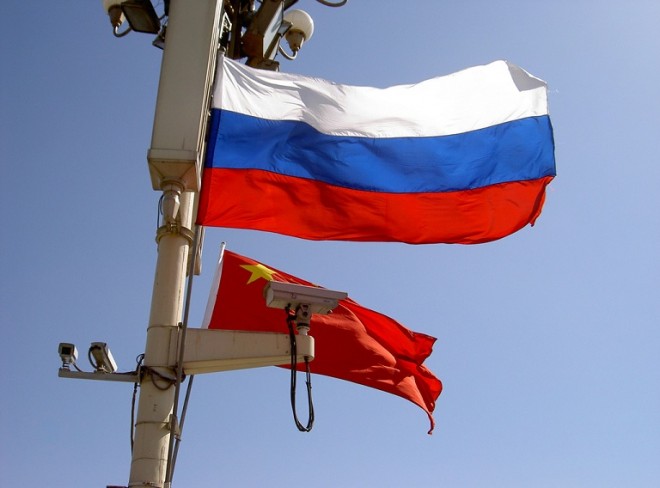
China, Russia Team Up at Sea
Noah Shachtman (Wired)
on’t freak out. But the Russian and Chinese militaries just joined forces — at least for a week, for a major exercise at sea. At least two dozen warships from both nations spent the last week conducting anti-piracy and “joint escort” operations, search and rescue and “firing hundreds of shells at surface, underwater and air targets,” according to local press reports.
The cooperation between Russia and China’s sailors could be a foreboding sign for the U.S. Navy, which is turning its sights to the Pacific. Or it could be a relatively isolated event — a very temporary alliance between two second-tier powers that still have all sorts of reasons to mistrust one another. And that’s if the ships are even capable of holding up over the stress of prolonged exposure at sea.
The exercise, variously named Naval Interaction or Maritime Cooperation 2012, took place in the Yellow Sea near the eastern Chinese coastal city of Qindao. On the Chinese side: two submarines and 16 surface warships, among them destroyers like the DDG-112 Harbin and five frigates like the Chzhoushan and Suyzhow, among auxiliary and support vessels. On the Russian side: the Pacific Fleet flagship cruiser Varyag (not to be confused with a defenseless ex-Russian aircraft carrier that was sold to China and renamed the Shi Lang) along with destroyers Admiral Vinogradov, Marshal Shaposhnikov and the Admiral Tributs.
That’s a considerable amount of firepower. But it’s peanuts compared to the 2005 “Peace Mission” exercise — the first time Russia and China ever held a joint military exercise at sea. That one included five times as many ships, plus scary force-projecting amphibious assault operations. This exercise involves more anti-submarine operations, which are notable on their own, particularly for the U.S. Navy. But it’s difficult to compare the two.
“To date China has not used its navy the way we think of it,” Jim Holmes, an associate professor of strategy at the Navy War College, tells Danger Room. “In a sense the U.S. Navy is at sea, and at war, all the time. The only real difference between wartime and peacetime conditions is whether live or exercise rounds come out of the barrel when we fire our weapons during exercises.”

China is different. Sure, they’ve built a whole slew of new “ship-killer” missile boats and diesel-powered submarines. But there’s a big difference between building a Navy — and using it. “If China wants to be a serious naval power,” Holmes adds, “it has to take ships to sea, both to test out its shiny new hardware and to let PLA Navy mariners hone their skills and build up some esprit de corps.”
What’s undeniable are the short-term and provocative political implications. The exercises also take place with heightened anxiety over a North Korea rocket test — which dunked into the Yellow Sea earlier this month — and a possible impending nuclear test. Joint U.S. and South Korean exercises, and the U.S. sending the George Washington into that same Yellow Sea, raised hackles in Beijing. Now these joint operations might be tit-for-tat.
“This exercise is a political message,” e-mails Abe Denmark, with the National Bureau of Asian Research. “China in recent years has expressed disapproval of [U.S.-South Korean] joint exercises in the Yellow Sea, especially those that involve an aircraft carrier. Chinese officials object to the proximity of American air and naval power to their economic and political centers, and want to make the case (especially to Seoul) that these exercises are uncomfortable when they’re just off your shores.”
Of course, these are shores that the U.S. Navy wants to spend more time around. The President and the Pentagon have declared that American forces are pivoting to the Pacific, in part to counter a rising China. That job could get a lot tougher, if Beijing and Moscow start to collaborate more often.
For the moment, though, that doesn’t seem to be happening. “In political terms, I don’t see this exercise as a harbinger of things to come in the Western Pacific,” says Holmes. “It’s a lot easier to list things keeping Beijing and Moscow apart than it is to list things tending to unite them in some sort of seagoing entente or alliance.”
